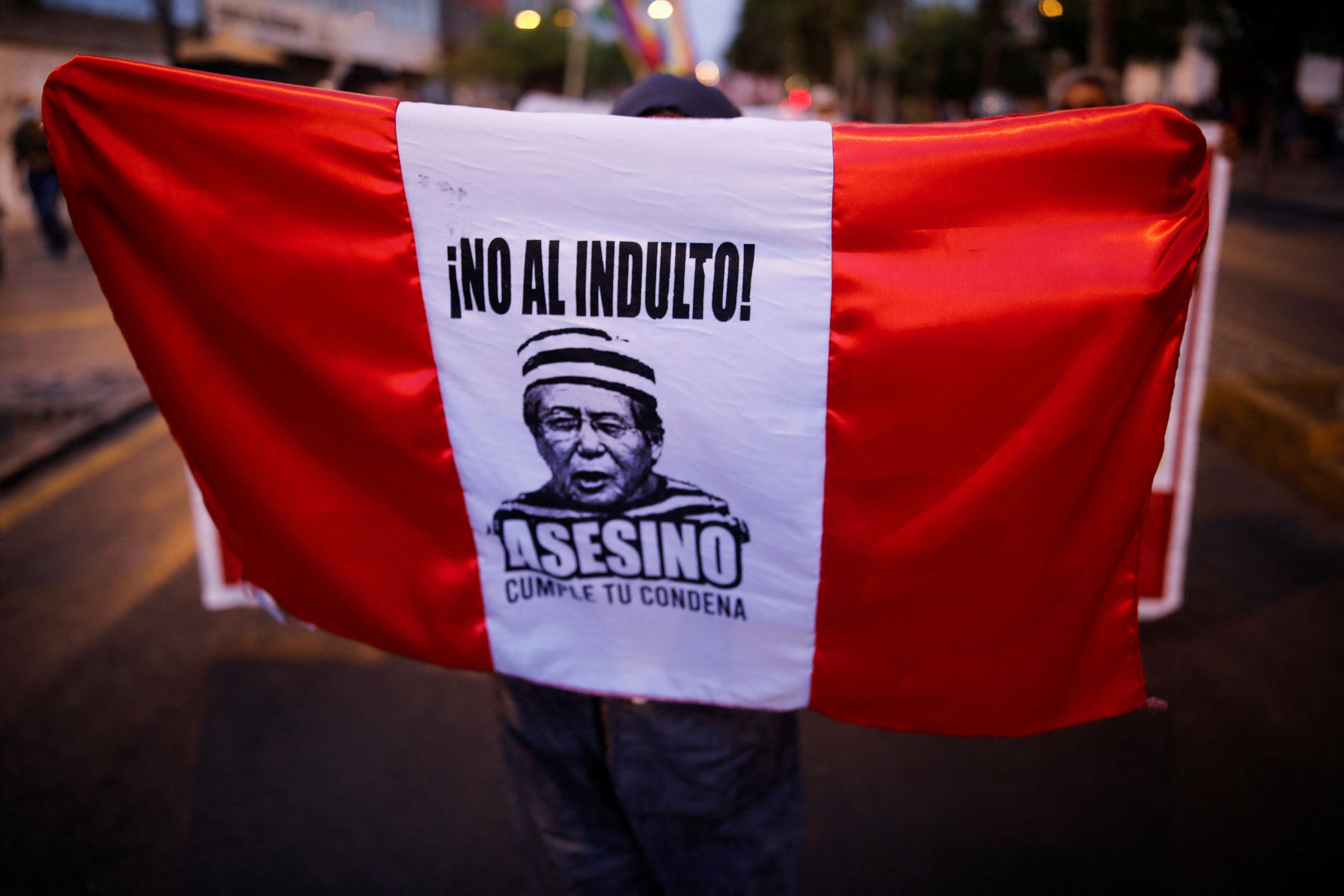
On March 28, the Constitutional Court published the resolution formalizing the pardon returned to former President Alberto Fujimori. Even so, the population's support for this decision is in the minority. The latest national representation poll by the Institute of Peruvian Studies (IEP) for the newspaper La República reveals that 52% of Peruvians are against the release of the former president.
More than half of Peruvians are against this decision of the court, to reinstate the pardon given by former President Pedro Pablo Kuczynski to the former president Fujimori. On the other hand, 43% are in favor, 1% indicate that they do not care and 4% do not know/do not think.
Opinions against the pardon are common in the south (64%) and central (59%) of the country. In addition, this position is more common among young people aged 18 to 24 (60%). The figures are as follows:
Scope:
- Metropolitan Lima: 50%
- Urban Peru: 53%
- Rural Peru: 55%
- Peru without Lima: 54%
Macrozone (without Lima):
- North: 48%
- Center: 59%
- On: 64%
- East: 46%
Age:
- From 18 to 24 years old: 60%
- From 25 to 39 years old: 53%
- From 40 to more: 49%
Socioeconomic status:
- A/B: 50%
- C: 53%
- D/E: 52%
On the other hand, the position in favor of the pardon of Alberto Fujimori is more common in the northern (48%) and eastern (47%) areas of the country. In addition, they are more common in the population aged 40 and over (45%). The figures are as follows:
Scope:
- Metropolitan Lima: 46%
- Urban Peru: 42%
- Rural Peru: 40%
- Peru without Lima: 42%
Macrozone (without Lima):
- North: 48%
- Center: 36%
- On: 33%
- East: 47%
Age:
- From 18 to 24 years old: 37%
- From 25 to 39 years old: 43%
- From 40 to more: 45%
Socioeconomic status:
- A/B: 46%
- C: 44%
- D/E: 41%

Regarding the other options (” I don't care” and “NS/NP”), the percentages are minimal. Figures from “I don't care”:
Scope:
- Metropolitan Lima: 1%
- Urban Peru: 1%
- Rural Peru: -
- Peru without Lima: 1%
Macrozone (without Lima):
- North: 1%
- Center: -
- On: 1%
- East: 2%
Age:
- From 18 to 24 years old: -
- From 25 to 39 years old: -
- From 40 to more: 2%
Socioeconomic status:
- A/B: 1%
- C: 1%
- D/E: 1%
Figures from “Don't Know /Don't Say”:
Scope:
- Metropolitan Lima: 3%
- Urban Peru: 4%
- Rural Peru: 5%
- Peru without Lima: 3%
Macrozone (without Lima):
- North: 3%
- Center: 5%
- On: 2%
- East: 5%
Age:
- From 18 to 24 years old: 3%
- From 25 to 39 years old: 4%
- From 40 to more: 4%
Socioeconomic status:
- A/B: 3%
- C: 2%
- D/E: 6%
The study consulted the population from Monday 21 to Thursday 24 March, and has margins of error of 2.8 points above and below each result of national representation.
TC PUBLISHED ALBERTO FUJIMORI'S PARDON RULING
On March 28, the Constitutional Court published the ruling reinstating the pardon to former President Alberto Fujimori and orders his release of the Barbadillo prison. The decision was taken on Thursday, 18, in a vote of 3 to 3, where President Augusto Ferrero ruled.
The 102-page document orders the “immediate release” of the former president who would be running in the next few hours or days to come.
Últimas Noticias
Debanhi Escobar: they secured the motel where she was found lifeless in a cistern
Members of the Specialized Prosecutor's Office in Nuevo León secured the Nueva Castilla Motel as part of the investigations into the case

The oldest person in the world died at the age of 119
Kane Tanaka lived in Japan. She was born six months earlier than George Orwell, the same year that the Wright brothers first flew, and Marie Curie became the first woman to win a Nobel Prize

Macabre find in CDMX: they left a body bagged and tied in a taxi
The body was left in the back seats of the car. It was covered with black bags and tied with industrial tape
The eagles of America will face Manchester City in a duel of legends. Here are the details
The top Mexican football champion will play a match with Pep Guardiola's squad in the Lone Star Cup

Why is it good to bring dogs out to know the world when they are puppies
A so-called protection against the spread of diseases threatens the integral development of dogs




